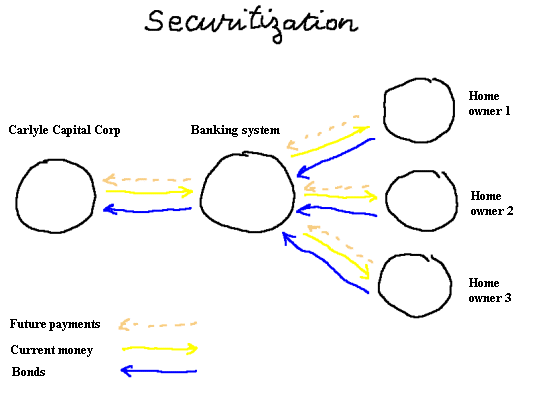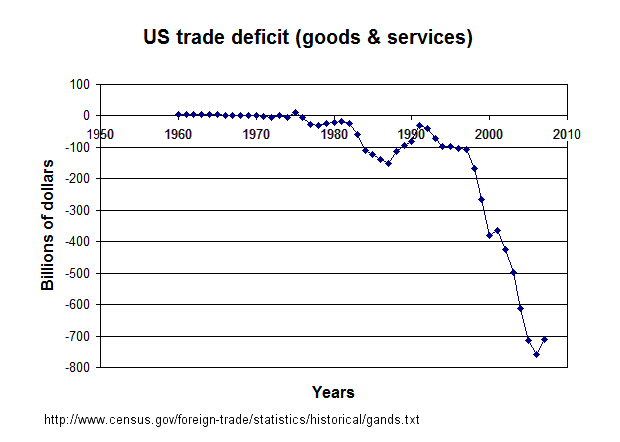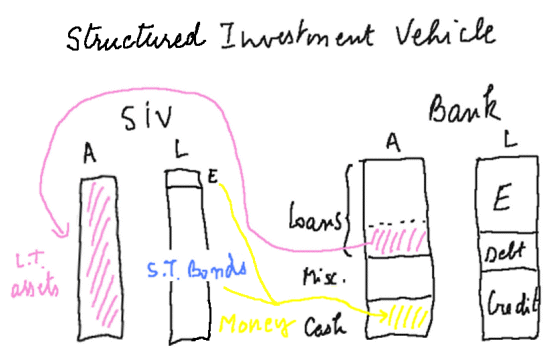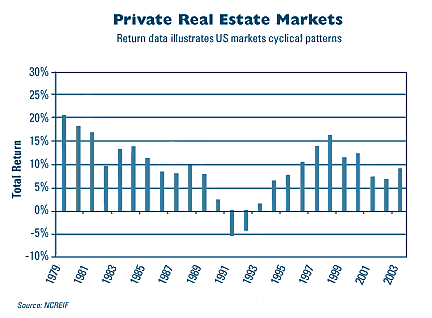|
|
Is there still a possibility to avoid a world depression?
LE MONDE | March 20, 2008| 10:59
Op-ed article in French by Jean-Hervé Lorenzi,
Translation, adapatation and comments by André Cabannes
That's it, here we are. Without really paying attention, we are going through the steps leading, one by one, to a genuine financial crisis. Yet one cannot say that central banks remained idle: they lowered the interest rates, they offered huge supplies of liquidities so that the financing needs of banks, and therefore the economy, could continue to be fulfilled.
The problem is that central banks run into two major difficulties. For one thing, just about everybody lacks lucidity and honesty, and many players still act as if nothing had happened. Secondly, not only the world financial system is confronted with a liquidity problem, but more importantly banks are undercapitalized.
To simplify: the banking system is forced to take back - and depreciate, because there is a high risk of default from the initial borrowers - a large part of the loans that were in the assets of the banks and that had been bundled and resold, in the process called securitization, to specialized financial firms which in turn sold them on financial markets as financial assets. And this constraint will force the banking system to tighten its credit policy.

Illustration: home owners (on the right) are the initial borrowers; the loans were, at first, assets of the banks; the banks resold them as asset-backed securities (ABS) to other financial institutions, like for instance the hedge fund Carlyle Capital Corp (on the left), which borrowed money to purchase them and is now in difficulty because the orange dotted lines do not flow as planned and the hedge fund cannot face its own liabilities.
To big crisis big means
All this leads to advocate the following idea: if we want to avoid a disaster, that is a bout of real economic depression in the United States and in Europe, we must resort to big means. Big means are easy to sketch on paper, yet very complicated to implement in reality.
This would consist, for the banking system, in spreading over time its taking back of bad assets and their depreciation. This would also entail the creation of big instruments, most likely public, which would take charge of a large part of these much talked about depreciated assets, and would "isolate" them, giving thus themselves the time and the means to mutualize the losses and spread them over a long period of time. It would not be the first time for the financial communitiy to undertake such a procedure [think of the public bail out of the French bank Credit Lyonnais 15 years ago, which cost approximately 30 billion of today's euros to French tax payers]. In any financial crisis, at one point, we must undertake a collective clean up of the losses. But the longer we wait, the bigger the bill will be.
But let's take a closer look at all this. As the American economist Barry Eichengreen recently pointed out, there is a kind of nostalgia of times bygone, when banks were simply fulfilling their role as intermediaries, lending money very reasonably to households and firms, and their balance sheets were well kept and transparent. It would just be sufficient to go back to the good old times when securitization did not exist, or, in another version of the same approach, to set up a strong and permanent regulation of the banking system, which would take us back to the blessed period of the 1960's. And this surely is one of the strongest temptations for today's European and American financial authorities.
A global way of financing
In truth, the problem is much more complex, because securitization is here to stay. It is belongs to a global way of financing the world economy, of which it is only one cog among many others, and which has had an overall positive effect. Indeed, securitization is in no way an isolated technique.
It is a consequence of the deregulation of the financial markets, which stimulated the creation of numerous new products and enabled financial institutions, which in the old days were specialized, to undertake all the functions of finance. It belongs to an environment of total dematerialization of the flows of capital worldwide. Finally, it springs from new forms of banking regulation: the "prudential" ratios, defined internationally to guarantee the solidity of credit institutions, demanding them to have enough equity to cover a certain proportion of the sums they lent. But the securitization process enabled banks to pull loans out of the assets of their balance sheet, turning them back into cash, and therefore cheating on the prudential ratios, because this cash could be lent again and the risk of banks was then much higher than shown by their balance sheet. [It depends who retains the liability if securitized loans turned bad. The paper suggests that it is the banks, but this is not always true.]

The result was the explosion of securitizations: they increased by 150% in ten years. Regarding more specifically the asset-backed securities (securities the payments of which come from other financial assets), the most common flavor of securitized products, the outstanding loans more than doubled, going from $1072 billion in 2000, to $2238 billion in 2007. These figures are only for the United States, but to a lesser, though still quite significant, extent, they apply to Europe too. The most startling event is the acceleration of the process beginning in 2001, linked to the deterioration of the American trade deficit.

Yet should we consider this movement a curse, and try and stop it? Of course not. The fact that banks could pull out of their balance sheet a part of their loans played a major role in the debt-economy which facilitated world growth. [Note that to turn financial assets into cash is as old as credit, and is done customarily by firms in need of short term cash, when they take some of their debtor paper to the bank in exchange, or guarantee, for a loan.] Never would the American trade deficit have been financed, had not this capacity been used to spread bank loans over financial markets throughout the world. Never the numerous financing vehicles, risky - for sure -, but which created value, would have been possible without this capacity to take apart and distribute the risk. The truth is that we would never have witnessed the massive saving transfers, created in some parts of the world, and invested in other parts, without this financial innovation, which is one good side of globalisation. ["Securitization" is much less a "financial innovation", though, than the author of the article would like to make it.]
Let's not fool ourselves: this period in the financial history of the world will not stop soon, at least so long as the respective levels of development of the various areas of the world and their demographic evolutions will make these financial flows necessary and useful. The point at issue, then, is not whether we should thwart these mechanisms but to observe that they have been used recklessly.
A whole system gone berserk
The securitization mechanisms were put to another use than their original purpose, which was to split a type of risk - real estate mortgage loans - to satisfy the fundamental logic of the banking system: to constantly maintain a good balance between each type of assets and liabilities (that is a balance between the level of loans out and the equity). The key word is excess: over the past five years, we saw the system go out of hands. The phenomenal development of credit in the United State has been much talked about, but the mechanism also concerns mergers and acquisitions: these past five years were crazy, marked by the uncontrolable explosion of securitization in all its forms.
In fact, securitization escaped the control of the banks' top financial executives to pass unoticeably under the direct control of their front offices, which were desperately looking for very high yields [and sometimes, like may be the case of Société Générale, had the tacit agreement of their top management]. Let's recall it: securitization consists in pulling out some assets from the asset side of the balance sheet of a financial institution, bundling them into a new security, and selling this new security on the financial markets. Usually a special "vehicle" is created for the purpose - called an SIV (special investment vehicle), or also a conduit - to which the assets are sold. Then the vehicle issues its own securities and receives the cash flows generated by the initial (so-called "underlying" or "backing") assets which are in its own balance sheet. With these proceeds the SIV can pay the investors who bought its own securities (interest and repayment of the principal). [The reader should not let itself be befuddled by the apparent sophistication of the construction: it is just the very simple creation of a legal entity to implement the pulling out of the assets.]
When studying carefully the mechanisms, one realizes that the banks very often played an active role at every level of the operations. Not only did they sell their own assets (loans to original borrowers, that they kept in their balance sheet), but they sometimes created themselves the entities which then bought the assets (the SIV) and, in this case, took also charge of the financing of the SIV. On top of this, the banks managed the bond issues to finance the SIV, financing and enabling them to purchase the banks' assets. It is this tight and intricate entanglement which makes the whole cobweb so hard to unravel.
The fact is that securitization sinned in two ways. Firstly, we relied excessively on short-term assets to refinance long-term debts [often SIVs issued short-term bonds to raise money, while the assets they bought were long-term].

Secondly, and more importantly, we created conduits which "securitized the securitizations": these derivative products encompassed a wide variety of risks, and were naturally financed with debt too. This is where the system went deeply awry: it created additional debt, the sole purpose of which was to jack up returns. The very logic of the banker's job is violated. Risks piled on risks have never lead to a healthy financing of a fast growing world economy.
But the difficulties don't stop here. One of the sources of difficulties, present and to come, is that banks and other financial institutions are totally unprepared to deal with a secondary market where are traded the ABS they created. Today none of the instruments exist which would ensure the harmonious functioning of this market [like stock markets do for the trade of equity products]. We find ourselves in the absurd and extremely dangerous situation where the investor is supposed to hold its titles until their maturity, while a market, to work well, must be lively and liquid.
The result of all these excesses, these useless risks, these errors of conception, was quick to show up. A world without organized liquidities is frightening and creates what is always at the heart of any financial crisis: the loss of confidence. This struck the whole range of securitization, way beyond the first shock of the Summer 2007 and the subprime crisis. New issues were priced significantly below what they should have been, for the simple reason that nobody could evaluate the risk of these securitizations, and therefore make a reasonable bid. This is enhanced by the fact that these products cannot really be negociated in the market. There lies, for a good part, the origin of the gigantic losses of the large American banks.
Where can it all lead?
On top of a classical cyclical evolution of the real estate sector, which would have simply slowed down the American, British and Spanish growths, came the financial disorder. Its consequences could be much more serious, particularly for its main beneficiaries over the last five years, namely the banks and large hedge funds. This is why the risk premiums asked to borrowing banks have climbed more than for industrial firms. Anyhow risk premiums have increased in all markets and sectors, and will keep doing so because, from now on, they incorporate the possibility of a macroeconomic recession. Therefore a higher rate of defaults than is observed today is expected.

Where can it all lead? Unfortunately we cannot rule out a major banking crisis, which would have two consequences: the rapid and violent reorganization of the balance sheets of financial firms and the slowdown, if not the disappearance, of securitization. Either event would have strong implications, which could be the relative drying up of credit and therefore its price increase. On these two points world financial authorities must be watchful and reactive.
We cannot stress enough that securitization is essential to the proper working of a credit economy, that which in turn helped the development of the world economy. To say that is also to recall that the shock will be two fold, since the banks, not only will loose a instrument of credit, but also, being forced to keep or take back most of the depreciated assets in their balance sheets, will need massive injection of equity. And of course they will have much more restrictive lending policies. To employ the future tense to speak of all this is in fact improper: this crisis scenario has already begun.
[The author omits to mention that another big consequence will be the development of new private credit, which will replace the present financial and banking system, and eventually create and use new moneys. Indeed money is just signs. To create it requires no particular effort. Just, the old players who lost their trustworthiness are pushed aside and replaced by new ones. In fact the present world banking and financial crisis is yet another blow to nation-states, and their governments, which are in the course of disappearing.]
Thus, to the real estate crisis, which in itself is nothing to particularly worry about, all the less since Europe is less concerned than the United States, come in addition the elements of a systemic and worldwide financial crisis. It rests on the disruption of the classical banking credit and a decrease in the value of assets, be they shares of stock or real estate. Each day brings its new load of proofs of these risks.
The task of central banks
The worst scenario is never sure, and nothing prevents us from imagining, as have already been undertaken in similar circumstances in the past, imaginative and daring policies. But time runs short. The main card we have in hands right now to get out of the crisis is the reactivity of central banks.
Two remarks concerning them. Their efficiency rests on their trustworthiness and this constraint is enough to explain the recent behavior of the European Central Bank (ECB), which is too easily criticized, particularly in France. Central banks have globally shown three merits:
The American Federal Reserve (Fed) and the Bank of England carried out on top of that a very active policy of rates management. The ECB will be lead to act likewise in the months to come, if it looks beyond the strict issues of money supply size and price levels.
Of course, the risk of inflation in Europe may be a source of concern, but it is not today's main problem. [Not only it is not the problem, but it will be the classical solution to the present vast disorganisation of credit denominated in official currencies! We already see just about all real assets, commodities, metals, oil, etc. increase in value denominated in official currencies. And, as money spontaneously springs up, there will be new private currencies worth much more than official ones.] The ECB must first of all prevent too fast a slide of the dollar. Everybody agrees on the hierarchy of problems. And this is the reason why the time has come for the ECB to lower its prime rates, even if it will not be the miracle medicine.
Aside from these minor observations, the central banks' diagnostic was rapid, correct and the ensuing solutions efficient. In the midst of the interbank market crisis, they were able to prevent in the United States the bankruptcies of mortgage lending banks. And they enabled large banks, in real jeopardy, to take back, without running short of liquidities, a part of their securitized products.
Jean-Hervé Lorenzi
professor of economics at Paris-Dauphine university, president of the "Cercle des économistes", adviser to the "Compagnie financière Edmond de Rothschild", member of the "Conseil d'analyse économique".
Interview of the author (in French)
Final comments by the translator: